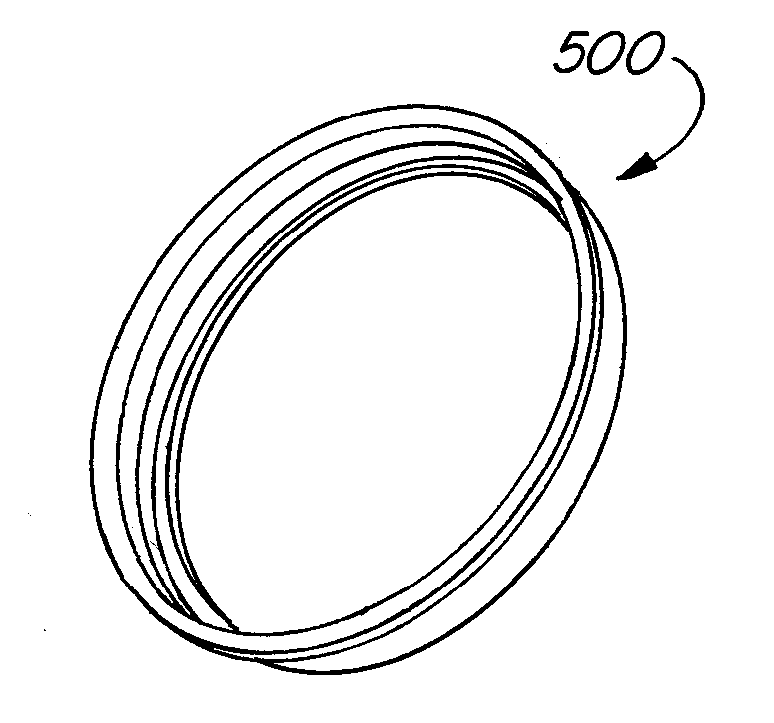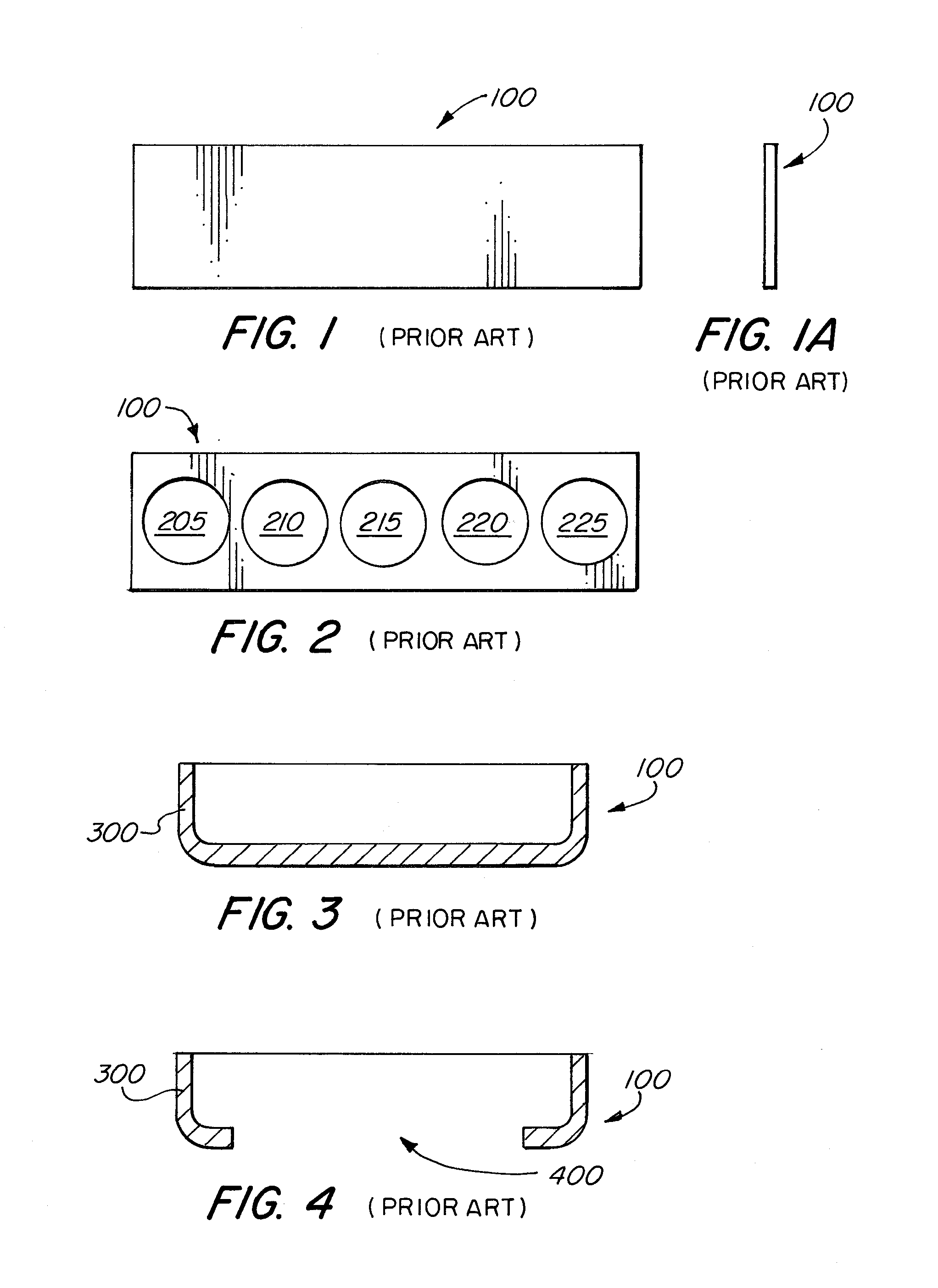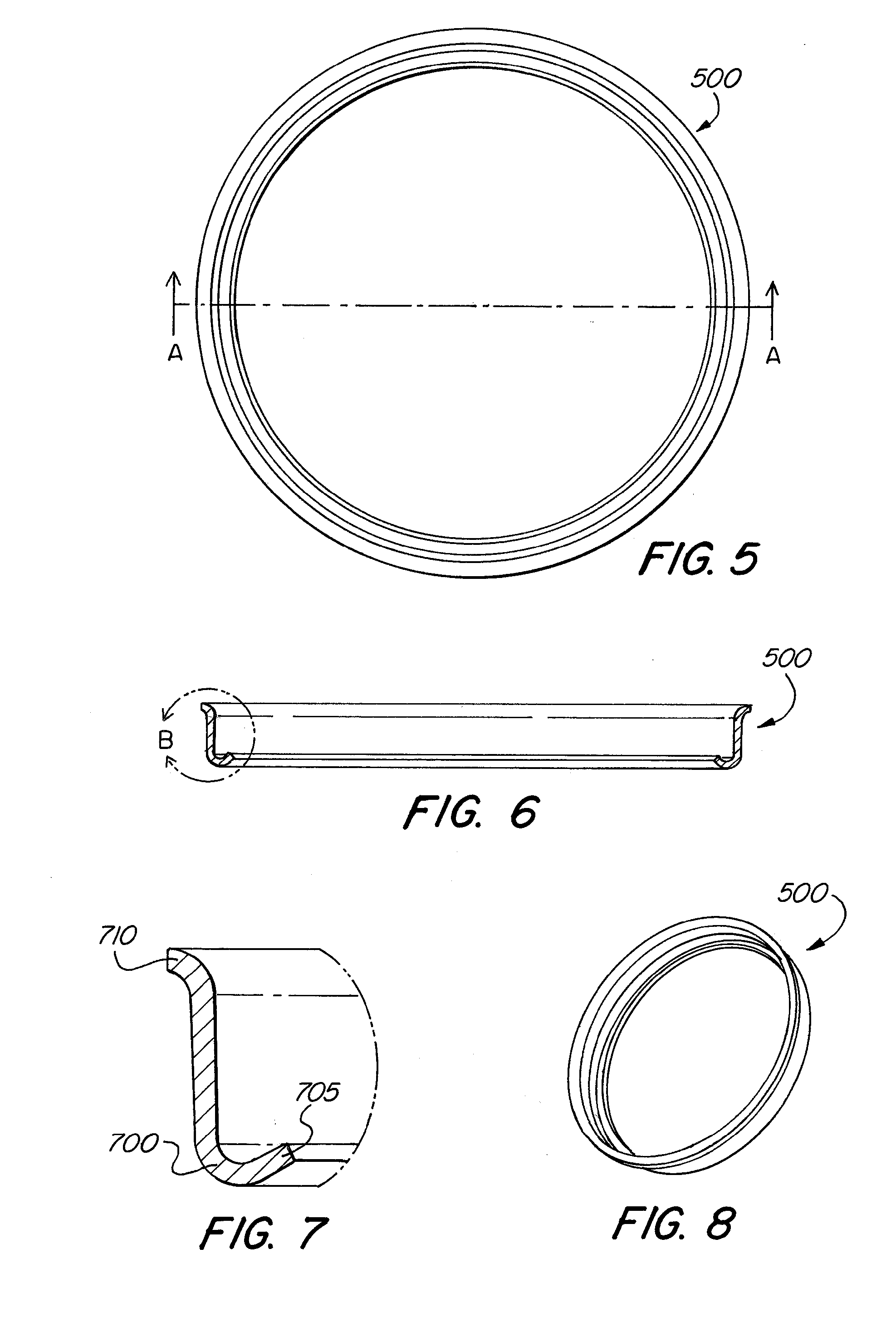Clamp Ring And Method For Manufacturing A Clamp Ring
a technology of clamp ring and clamp ring, which is applied in the direction of manufacturing tools, braking components, brake systems, etc., can solve the problems of inefficiency and waste, poor tensile strength of clamp ring, and weak end product clamp ring, so as to reduce waste scrap and eliminate waste.
- Summary
- Abstract
- Description
- Claims
- Application Information
AI Technical Summary
Benefits of technology
Problems solved by technology
Method used
Image
Examples
Embodiment Construction
[0057]Referring to FIG. 5, clamp ring 500 of the present invention is shown. Clamp ring 500 is shown having ridges, however such ridges are not required in all embodiments of the present invention.
[0058]FIG. 6 shows a cross section view of clamp ring 500 of FIG. 5 taken along line A-A. Here the arc'd area of the clamp ring is shown taken across section B of FIG. 6. FIG. 7 shows a close up detailed view of the arc'd or curved area of FIG. 6. Arc'd section 700 is shown in FIG. 7 having a top section 710 and a bottom section 705. Arc'd section 700 is used to help the clamp ring form a seal. Arc'd section 700, top section 710 and bottom section 705 may have various angles to conform the clamp ring 500 to the member it attaches to.
[0059]FIG. 8 shows a perspective view of clamp ring 500 of the present invention.
[0060]FIG. 9 shows a side view of steel sheet 900 of the present invention and FIG. 9A shows an end view of steel sheet 900 of FIG. 9. Steel sheet 900 is shaped by a shaping techni...
PUM
| Property | Measurement | Unit |
|---|---|---|
| diameter | aaaaa | aaaaa |
| diameter | aaaaa | aaaaa |
| diameter | aaaaa | aaaaa |
Abstract
Description
Claims
Application Information
 Login to View More
Login to View More - R&D
- Intellectual Property
- Life Sciences
- Materials
- Tech Scout
- Unparalleled Data Quality
- Higher Quality Content
- 60% Fewer Hallucinations
Browse by: Latest US Patents, China's latest patents, Technical Efficacy Thesaurus, Application Domain, Technology Topic, Popular Technical Reports.
© 2025 PatSnap. All rights reserved.Legal|Privacy policy|Modern Slavery Act Transparency Statement|Sitemap|About US| Contact US: help@patsnap.com



